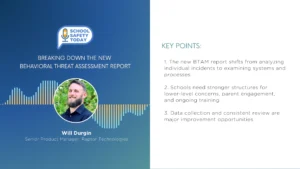How the US Military Uses Batteries for Mission Critical Operations
The requirements of military equipment never change. Operation needs to be safe, performance needs to be assured, and it simply cannot fail.
Now, as innovation in unmanned vehicles and other segments of defense technology booms, batteries are stepping up to keep pace with that growth and ensure that mission-critical military applications succeed.
The Different Military Applications for Batteries
The military requires innovative battery solutions for a wide variety of key applications, though key weapons systems and vehicle applications are likely at the top of the list.
And battery developers have responded as of late, generating safer, more efficient and more productive solutions to play these critical roles.
In particular, within the past two years, the Defense Logistics Agency’s Battery Network research and development program (BATTNET) has worked toward new, lithium ion power for anti-tank missile systems, leveraging the innovative battery technology that’s also been cropping up for use in the growing electric vehicle sector.
The program has also reached out to manufacturers to inquire about leveraging newer, glasslike materials in lead-acid batteries to power armored vehicles. Previous lead-acid batteries required users to open cells and refill them with acid, which presented potentially dangerous challenges.
The Growing Importance of Reliable Energy
In addition to the clear safety aspect of more innovative battery solutions, BATTNET, created in 2010, is tasked with addressing sustainment problems, boosting manufacturing capabilities and efficiency, and identifying areas where innovative solutions can be used to the military’s benefit.
This push is centered around a core idea – by rethinking the way the military approaches equipment, which traditionally involves simply purchasing new equipment, and emphasizing sustainment and longevity, the costs typically associated with the purchase of new equipment can be rerouted to serve critical purposes elsewhere.
In this way, the military’s battery use is indicative of greater global trends, as manufacturers and end-users of batteries the world over search for ways to provide the same level of productivity and power in packages that promote sustainability, resource savings, and more.
Examining Military Demand for Batteries
This isn’t all theory and conjecture, either. According to a 2018 report from ReportLinker, military demand globally was expected to balloon by 31% by 2023.
This growth, the report posits, is going to be driven by sweeping modernization efforts across the world’s defense forces and even greater numbers of unmanned vehicles being produced, a bump in demand that mirrors a similar rise in electric vehicles for consumer use.
In particular, the world’s militaries will look for rechargeable batteries that reduce the burden on members of the armed forces, and lithium-ion solutions could be primed to lead the way on that front.
How Arbin Helps Support These Mission-Critical Initiatives
Wherever there is a significant call for innovation in battery production, testing must answer. Industry-leading testing equipment helps manufacturers keep pace with growing demand without sacrificing confidence in the solutions being produced – and Arbin is on the cutting-edge of battery testing.
To learn more about how Arbin delivers that industry-leading performance, visit arbin.com/products/battery-test-equipment/ today.
—
Follow us on social media for the latest updates in B2B!
Twitter – @MarketScale
Facebook – facebook.com/marketscale
LinkedIn – linkedin.com/company/marketscale









